This is a preprint.
TOR signaling regulates GPCR levels on the plasma membrane and suppresses the Saccharomyces cerevisiae mating pathway
- PMID: 38798445
- PMCID: PMC11118302
- DOI: 10.1101/2024.05.09.593412
TOR signaling regulates GPCR levels on the plasma membrane and suppresses the Saccharomyces cerevisiae mating pathway
Abstract
Target of Rapamycin (TOR) complexes and G-protein-coupled receptors (GPCRs) are crucial signaling hubs that coordinate adaptive responses to environmental inputs. While GPCR-mediated regulation of TOR has been extensively studied, little is known about TOR-mediated regulation of GPCRs. Here, we establish TOR as a regulator of GPCR signaling via its control of receptor endocytosis in the yeast mating system. By pairing fluorescence microscopy with yeast genetic approaches, we identify the machinery that bridges TOR nutrient sensing to GPCR internalization. Furthermore, we find that autophagic machinery is employed during mating to deliver active receptor to the vacuole (lysosome), suppressing the mating pathway. These results demonstrate that TOR regulates the localization and signaling of the yeast mating GPCR in both ligand-dependent and -independent contexts. These pathways are highly conserved, suggesting that TOR-regulation of GPCRs may be a broadly conserved mechanism for integrating competing signals involving metabolic state and external communications.
Conflict of interest statement
Competing interests: Authors declare that they have no competing interests.
Figures


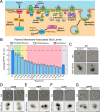

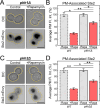
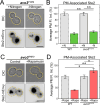
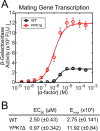
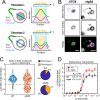

Similar articles
-
The Black Book of Psychotropic Dosing and Monitoring.Psychopharmacol Bull. 2024 Jul 8;54(3):8-59. Psychopharmacol Bull. 2024. PMID: 38993656 Free PMC article. Review.
-
High-Throughput Indirect Monitoring of TORC1 Activation Using the pTOMAN-G Plasmid in Yeast.Bio Protoc. 2025 Jun 20;15(12):e5356. doi: 10.21769/BioProtoc.5356. eCollection 2025 Jun 20. Bio Protoc. 2025. PMID: 40620813 Free PMC article.
-
Short-Term Memory Impairment.2024 Jun 8. In: StatPearls [Internet]. Treasure Island (FL): StatPearls Publishing; 2025 Jan–. 2024 Jun 8. In: StatPearls [Internet]. Treasure Island (FL): StatPearls Publishing; 2025 Jan–. PMID: 31424720 Free Books & Documents.
-
"In a State of Flow": A Qualitative Examination of Autistic Adults' Phenomenological Experiences of Task Immersion.Autism Adulthood. 2024 Sep 16;6(3):362-373. doi: 10.1089/aut.2023.0032. eCollection 2024 Sep. Autism Adulthood. 2024. PMID: 39371355
-
The Lived Experience of Autistic Adults in Employment: A Systematic Search and Synthesis.Autism Adulthood. 2024 Dec 2;6(4):495-509. doi: 10.1089/aut.2022.0114. eCollection 2024 Dec. Autism Adulthood. 2024. PMID: 40018061 Review.
References
Publication types
Grants and funding
LinkOut - more resources
Full Text Sources
